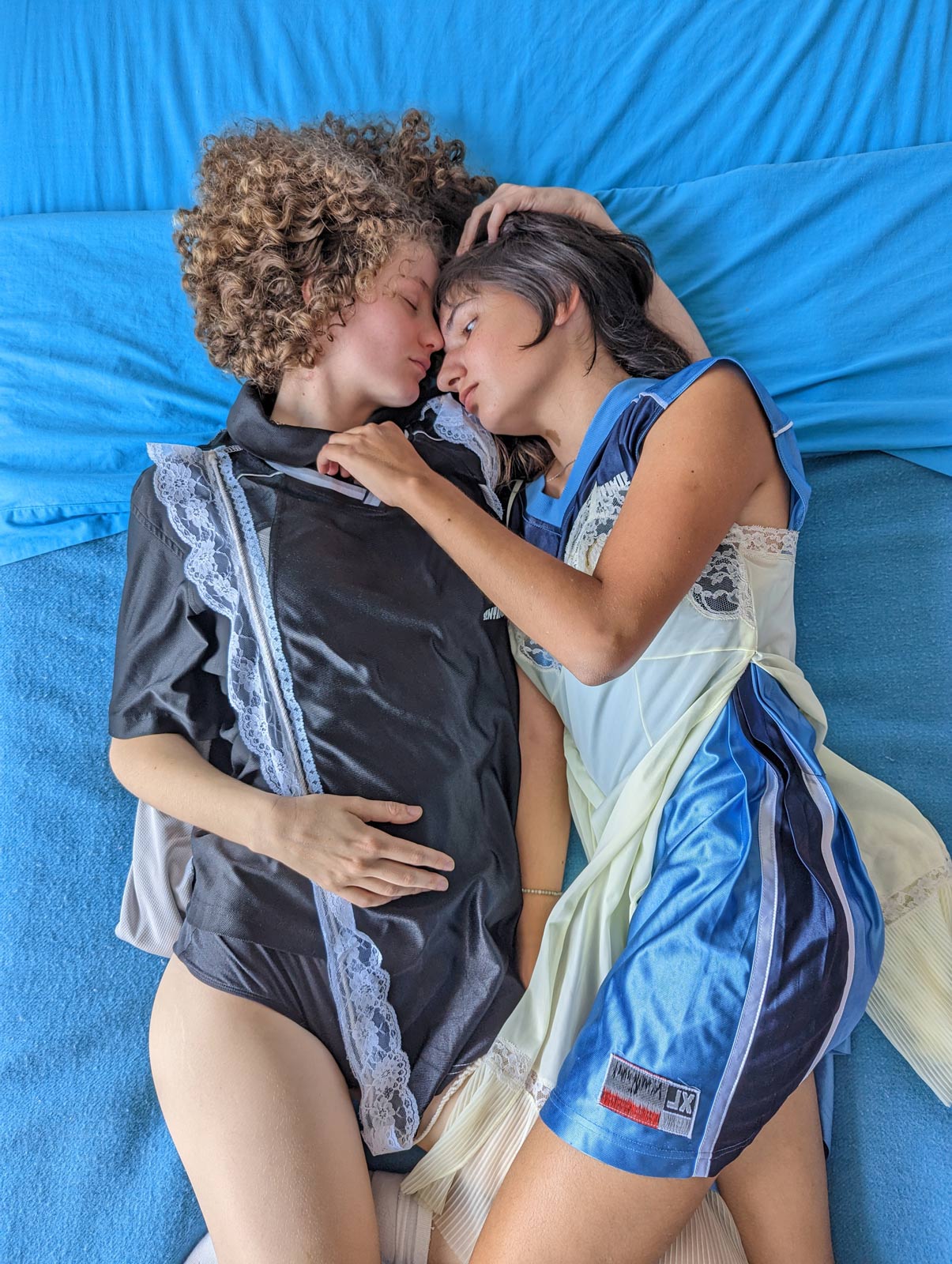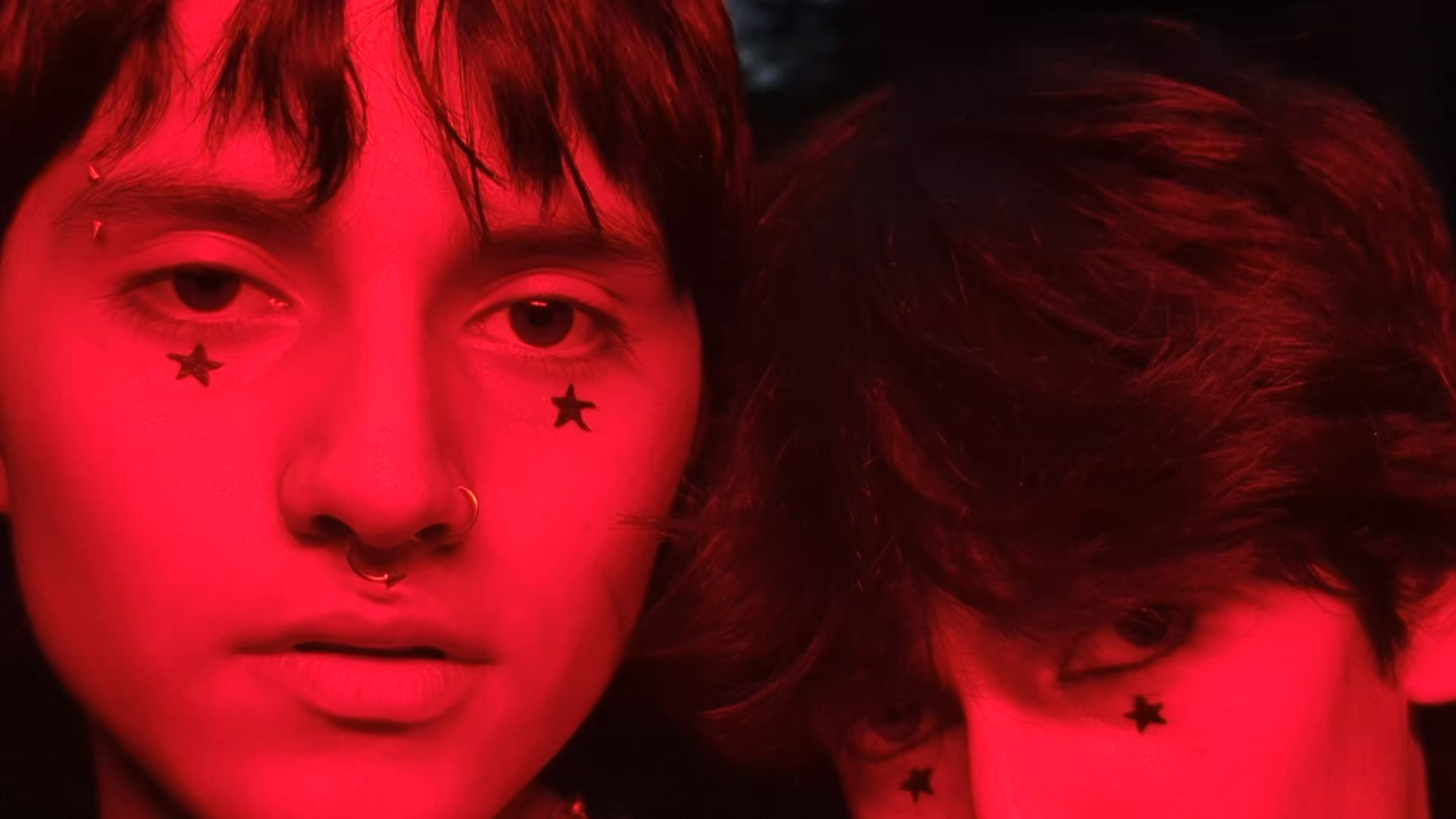The photographer’s ongoing series ‘No Mamés’ takes the image-making process down to its bare bones, lending intimacy though immediacy
Mayan Toledano’s photographs are founded on intimacy—a component of the work of any portrait artist, to be sure, but one that can get lost in the grand scheme of composition, staging, expensive cameras and lighting and production. Her ongoing series No Mamés circumvents the complexity of the modern image-making process: simple shots of her friends in Mexico City—a community of queer creatives—posed in their bedrooms, dressed in their own clothes, and executed, collaboratively, in the space between “fantasy and their most authentic form.”
Its biggest divergence from the industry norm? Across No Mamés’s entirety, Toledano employed a Google Pixel phone camera. “I shoot most of my projects on film,” she reflects, “and it takes longer to conceptualize and execute each image. With [No Mamés], the process became part of the image—the immediacy helped me connect with my subjects, adding lightness to what we create together.” The series will be displayed, among the work of 25 other image-makers, at Creator Labs’s Season 7 pop-up. The exhibition’s theme, Be Seen, Be Heard, Belong, is a celebration of new voices in the traditional arts sphere—and a potential avenue toward its increased accessibility.
Ahead of the show, Toledano speaks with Document, detailing her love for storytelling, the power of private space, and the years-long evolution of No Mamés.
Morgan Becker: How were you introduced to art, and then photography more specifically?
Mayan Toledano: I used to be a dancer. My dream growing up was to become a ballerina. That’s what shaped my perspective, around telling stories and creating a language—finding a specific voice for myself. Photography came later, when I studied fashion in college. I was more interested in the challenge of telling the story of a garment, than in the design or its making.
Morgan: What’s the general concept behind your series, No Mamés?
Mayan: No Mamés is an honest portrait of a community, of people and time, set in Mexico City. Each image is created along with a person who is letting me into their world, and finding a balance between fantasy and their most authentic form.
Morgan: Why Mexico City?
Mayan: It became a creative home to me at some point—finding community, love, forming friendships, and feeling inspired.
Morgan: Who are the people you photograph, and how would you characterize your relationship with them?
Mayan: Friends, friends of friends. People led me from one to another, and the project grew.
“Each image is created along with a person who is letting me into their world, and finding a balance between fantasy and their most authentic form.”
Morgan: How’d you come to the decision to photograph subjects in their bedrooms, and other personal spaces? Would you say that it’s an automatic segue to intimacy?
Mayan: I do like to observe people in their natural spaces, finding relationships with objects, comfort, and the choices they make in private.
Morgan: Who are the creatives—of any medium or era—who’ve influenced your practice most powerfully?
Mayan: I would say film is my favorite medium. Pedro Almodóvar and Abbas Kiarostami are my favorite sources of [inspiration]. It comes from empathy and humanity, and that is what I would always prefer to consume. Also, my mother—the way she raised me, her immigration story, her power, her warmth and presence.
Morgan: You began developing No Mamés a few years ago. How has the project evolved over time?
Mayan: I see people further into their transitions, becoming a more realized and secure version of themselves. It’s incredible to see through the lens, and in person.
Morgan: In a few words, how would you sum up the mission behind your work?
Mayan: Connecting hearts.
Creator Labs Season 7, Be Seen, Be Heard, Belong, is on view in Chelsea between February 9 and March 23.













